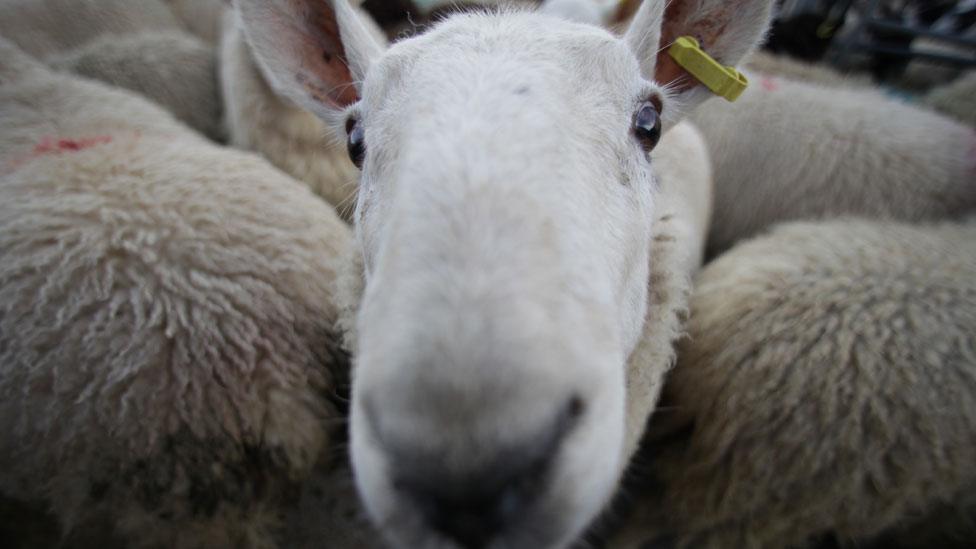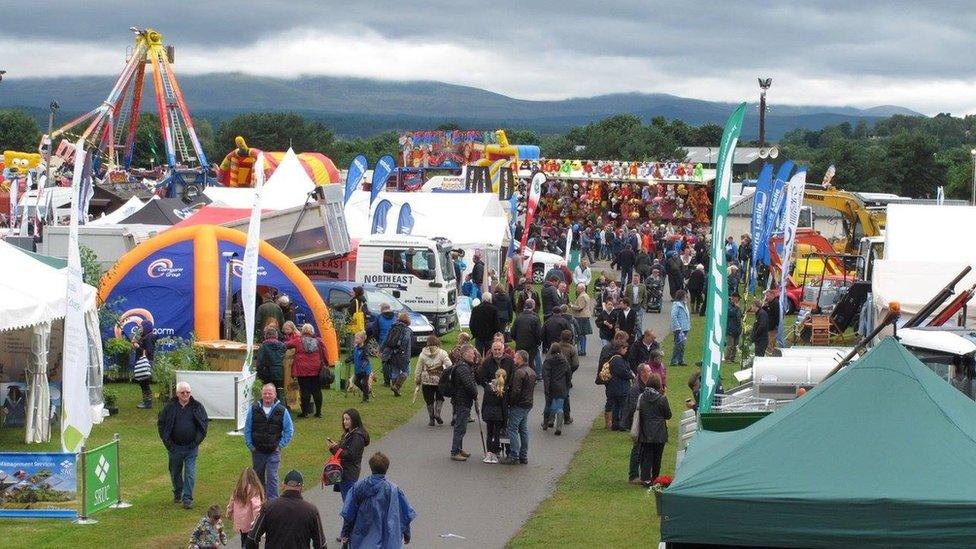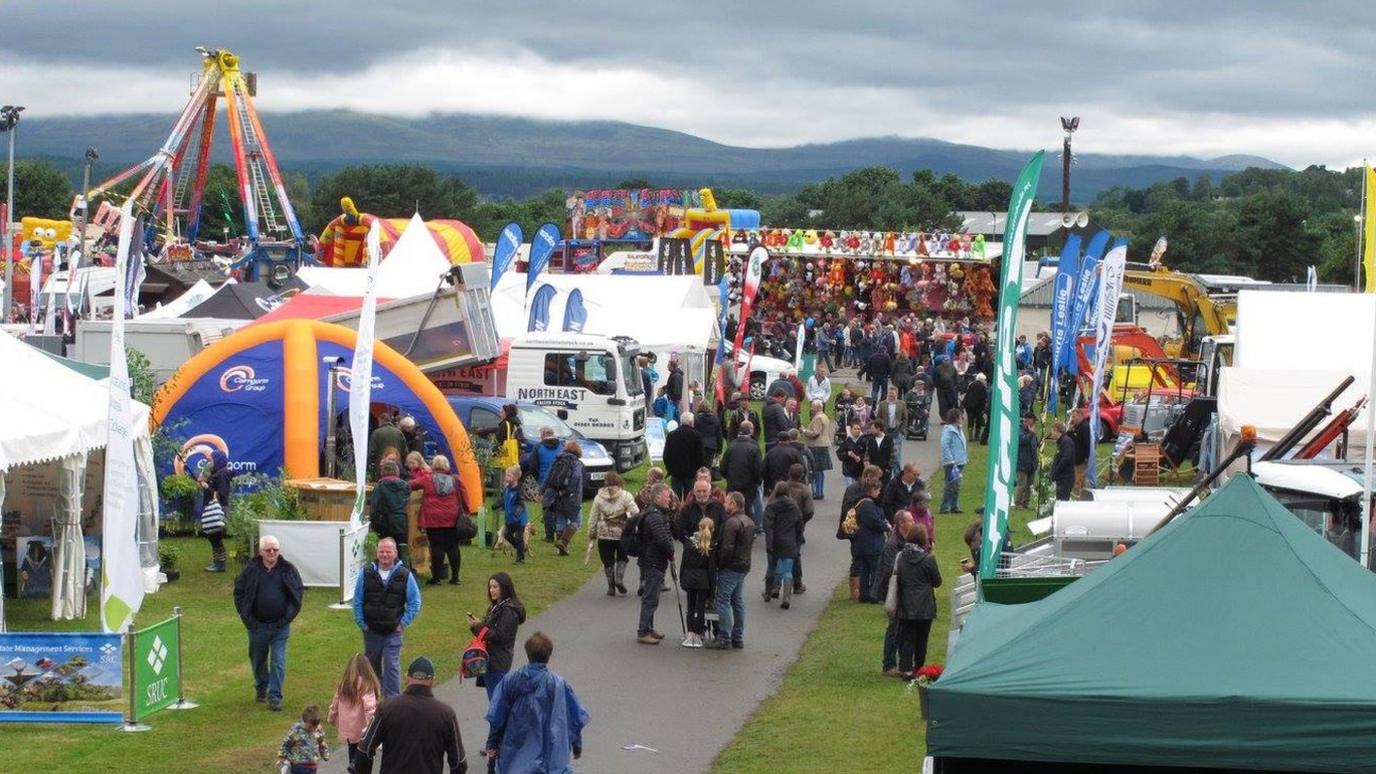Black Isle Show 'relevant as ever'
- Published

The show is regarded as a meeting place for farmers and suppliers, but also a place for educating the wider public on food production
The biggest agricultural show in the Highlands remains as relevant today as it did more than a century ago, its organisers have said.
The Black Isle Show and the organisation behind it marked their 180th anniversary this week.
Rod MacKenzie, of Black Isle Farmers' Society, said farmers and crofters see the show as a chance to meet their suppliers face-to-face.
He said this was important given that so much business is now done online.
Held at a show ground in Muir of Ord, the show took place on Wednesday and Thursday. As many as 30,000 people are thought to have attended.
Mr MacKenzie told BBC Alba the event's "core" crowd were farmers and crofters from across the Highlands.
He said a key reason for them attending was to meet their suppliers who routinely set up trade stalls at the event.
Mr MacKenzie said: "We are very much in a virtual world where you can order things by email and by phone, even from out in a field using an app on your phone.
"But farmers and crofters want the physical contact with their suppliers.
"Even if that contact is for just five minutes, they still want to see them face-to-face and interact with them."

Black Isle Show: A brief history

Black Isle Farmers' Society started its show 180 years ago as an event held on farms dotted across the peninsula.
In the 1950s the show was held in the village of Muir of Ord.
It continued to occupy the same site over the following years, and over the last 10 to 12 years the society invested in improving it with the laying of tarred roads and better toilets.
The show ground is close to where old drove roads, used for moving cattle across Scotland, met and a market was held.

For the first time, the show placed some of the livestock being exhibited closer to areas where the general public usually gathers.
Livestock, such as sheep and cattle, are mostly in another area of the showground away from the main public area.
Mr MacKenzie said: "We put livestock near to where the fairground and the main food stalls are.
"We did that because our remit is to educate the public in farming and food production.
"We want the public to interact with the livestock and putting some in the very public area offered a chance to do that."
- Published3 May 2017
